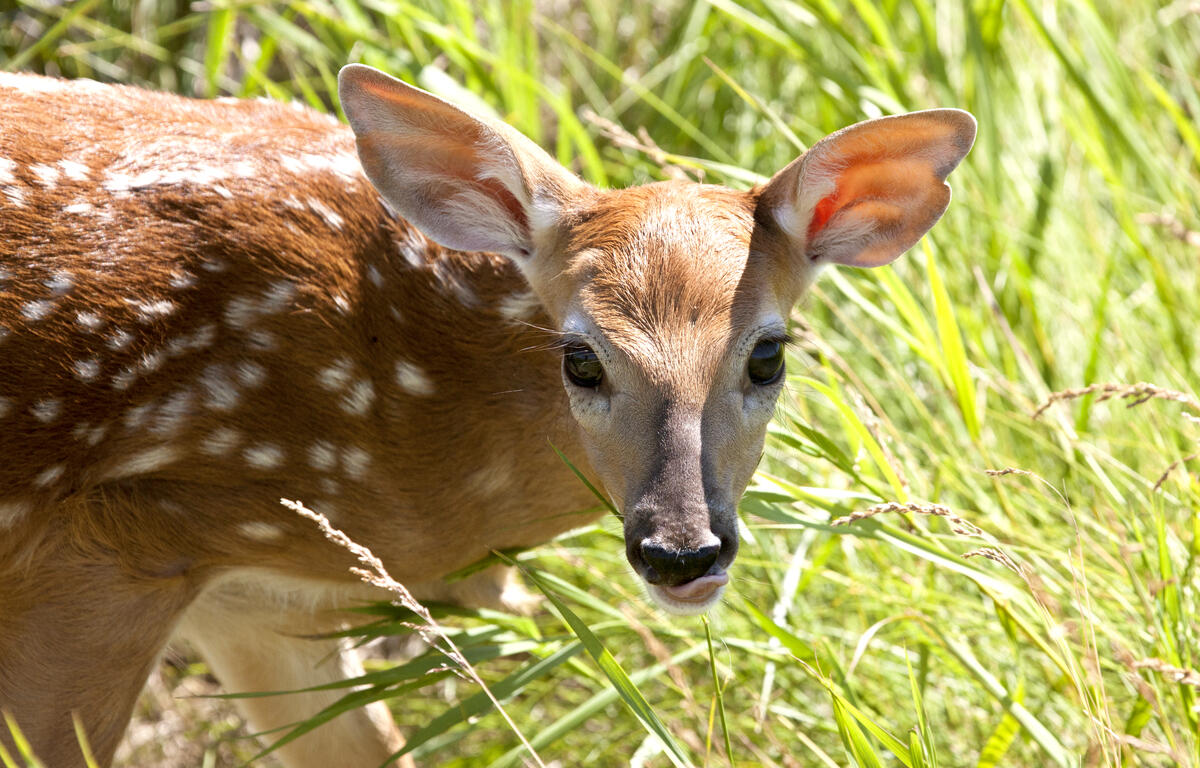RICHMOND, VA (Virginia Department of Wildlife Resources) – Signs of spring are abundant across the Commonwealth with flowering dogwoods in bloom, hayfields greening up, and white-tailed deer fawns being born. During this time fawns can often find their way into yards, gardens, and hayfields. Often, concerned citizens think these fawns need help, but in almost all cases, the best way to help is to simply give the fawn space and leave it alone.
Concerned people sometimes pick up animals that they think are orphaned. Most such “orphans” that good- intentioned citizens “rescue” every spring should have been left alone. Most wild animals will not abandon their young, but they do leave them alone for extended periods of time.
Fawns, born from May through July, are purposely left alone by their mothers. Female deer, called does, stay away from the fawns to avoid leading predators to their location. The white-spotted coat camouflages a fawn as it lies motionless in vegetation. Young fawns generally will not try to run away when they are approached. Does will return several times each day to move and/or feed their young. You probably will not see the doe at all since she only stays to feed the fawn for just a few minutes before leaving it alone again.
If less than 24 hours have passed since a fawn has been “rescued,” the fawn should be taken back and released at the exact same location where it was found. After returning the fawn, immediately leave the area and do not wait for the doe to return. The doe will not come back for the fawn if a human is nearby.
If a wild animal has been injured or truly orphaned, do not take matters into your own hands. Report the incident by calling the Virginia Department of Wildlife Resources (DWR) wildlife conflict helpline at 1-855-571-9003, Monday through Friday, 8 a.m. – 4:30 p.m., or find a permitted wildlife rehabilitator through the DWR website. Only permitted wildlife rehabilitators are legally allowed to raise a fawn in captivity. Survival back in the wild is often low for rehabilitated fawns. Lessons during their first year of life, especially from their mother, are critical for a fawn to learn where to find food and avoid predators. Thus, the best way to help a fawn is to leave it alone.
In Virginia, fawn rehabilitation is prohibited within designated disease management areas for chronic wasting disease (CWD). This restriction is recognized as a best management practice for limiting the spread of CWD due to animal transport and potential transmission within a captive setting. Visit the CWD website for more information on disease management and locations.
More information about keeping deer wild in Virginia can be found on the department website.




